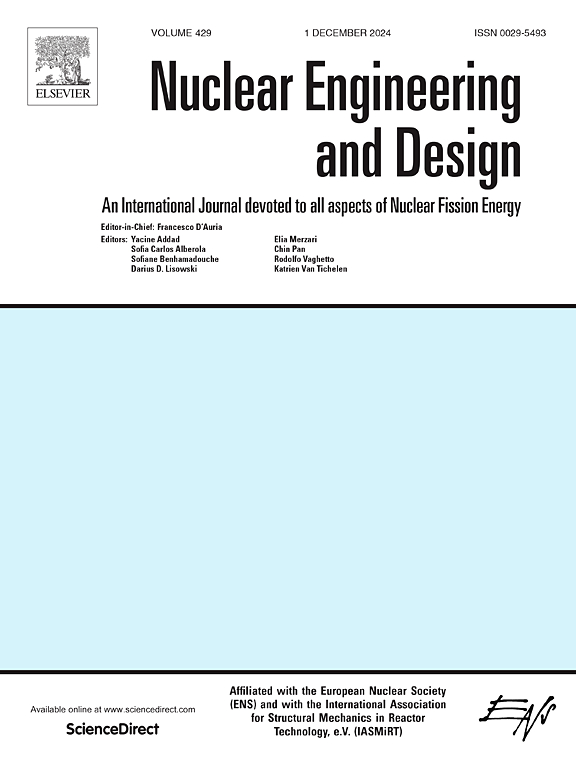Improving the accuracy of soil-structure interaction analysis through the generalized subtraction method
IF 2.1
3区 工程技术
Q1 NUCLEAR SCIENCE & TECHNOLOGY
引用次数: 0
Abstract
This study proposes the Generalized Subtraction Method (GSM) to improve the accuracy of Soil-Structure Interaction (SSI) analysis, which is crucial for seismic design of large structures such as nuclear power plants. Although the existing Subtraction Method (SM) used in the SASSI program is advantageous in terms of computational efficiency, the method has limitations that can cause abnormal responses in high-frequency regions. To address this issue, this study introduces a method of defining additional interaction nodes in the excavated soil to shift the spurious fundamental natural frequency of the excavated soil with fixed boundary conditions at the interaction nodes to above the maximum frequency of interest. By adjusting the fundamental natural frequency through iterative eigenvalue analysis, the proposed method provides stable and accurate SSI analysis results even in high-frequency regions. Numerical analysis results for two example models showed that the GSM achieved a similar level of accuracy to the Direct Method (DM) while using fewer interaction nodes than the existing Modified Subtraction Method (MSM).
利用广义减法提高土-结构相互作用分析的精度
本文提出广义减法(GSM),以提高土-结构相互作用(SSI)分析的精度,这对于核电厂等大型结构的抗震设计至关重要。尽管SASSI程序中使用的现有减法(SM)在计算效率方面具有优势,但该方法存在局限性,可能导致高频区域的异常响应。为了解决这一问题,本研究引入了一种在挖掘土壤中定义额外相互作用节点的方法,以将在相互作用节点处具有固定边界条件的挖掘土壤的伪基本固有频率移至最大感兴趣频率以上。该方法通过迭代特征值分析调整基本固有频率,即使在高频区域也能提供稳定准确的SSI分析结果。两个算例模型的数值分析结果表明,GSM在使用更少交互节点的情况下,达到了与直接法(DM)相似的精度水平。
本文章由计算机程序翻译,如有差异,请以英文原文为准。
求助全文
约1分钟内获得全文
求助全文
来源期刊

Nuclear Engineering and Design
工程技术-核科学技术
CiteScore
3.40
自引率
11.80%
发文量
377
审稿时长
5 months
期刊介绍:
Nuclear Engineering and Design covers the wide range of disciplines involved in the engineering, design, safety and construction of nuclear fission reactors. The Editors welcome papers both on applied and innovative aspects and developments in nuclear science and technology.
Fundamentals of Reactor Design include:
• Thermal-Hydraulics and Core Physics
• Safety Analysis, Risk Assessment (PSA)
• Structural and Mechanical Engineering
• Materials Science
• Fuel Behavior and Design
• Structural Plant Design
• Engineering of Reactor Components
• Experiments
Aspects beyond fundamentals of Reactor Design covered:
• Accident Mitigation Measures
• Reactor Control Systems
• Licensing Issues
• Safeguard Engineering
• Economy of Plants
• Reprocessing / Waste Disposal
• Applications of Nuclear Energy
• Maintenance
• Decommissioning
Papers on new reactor ideas and developments (Generation IV reactors) such as inherently safe modular HTRs, High Performance LWRs/HWRs and LMFBs/GFR will be considered; Actinide Burners, Accelerator Driven Systems, Energy Amplifiers and other special designs of power and research reactors and their applications are also encouraged.
 求助内容:
求助内容: 应助结果提醒方式:
应助结果提醒方式:


